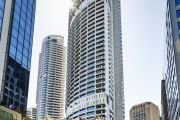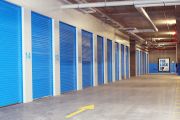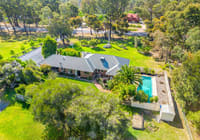
How 'mum-and-dad' investors can become commercial landlords
With the potential for higher yields, lower maintenance costs and longer leases than residential property, there’s a lot for mum-and-dad investors to like about dipping their toes into the commercial property market.
While small-scale residential property investing is common, commercial landlords tend to be large property groups or investment funds. Though there are some similarities between investing in residential and commercial property, there are also some major differences to understand.
Paths to entry
There are different ways investors can enter the commercial property market. One popular model, particularly among business owners, is a self-managed superannuation fund.
The fund can buy business premises and then lease them back to the business, so self-managed super fund owners effectively become their own landlords. However, there are no mates rates, with regulations requiring that commercial properties are leased at market rates.
Investors can also use Australian Real Estate Investment Trusts (A-REITs), which offer access to a range of investments in property or property-related assets. A-REITs are commonly accessed through Exchange Traded Funds (ETFs), which are typically low-cost and good vehicles for diversification because they can provide exposure to a wide number of global real estate assets.
Alternatively, mum-and-dad investors can buy shares directly in one of several ASX-listed groups such as Dexus, Charter Hall and Abacus.
Today’s market
With some offices spending longer than expected on the market, this year could be a wise time for mum-and-dad investors to enter the commercial property fray, says Mitch Witherow, senior negotiator at CBRE.
“Lots of properties that might have been listed in Q3 or Q4 last year didn’t transact and vendors still want to sell,” he says. “So there is definitely some good pricing around and some good deals around.”
The cap rate – or capitalisation rate, which is the rate of return – varies according to the quality and location of the office building. Witherow says cap rates have softened across the board recently and could be anywhere between 5 and 9 per cent “depending on where you go and what it is”.
“But it’s probably more like 7 to 9 per cent for something that doesn’t have an amazing covenant, like your local accountant with some little shops below,” he says.
Vacancies
The length of time a commercial property can sit vacant is usually longer than a residential property. Long vacancies can interrupt investment cash flow, so Witherow recommends buying an office that is already leased and has a long leasing period ahead.
“Vacancies can sit there for a while, especially in the suburbs,” he warns. “So [try to] find something that has little leasing risk, but that’s not just one tenant.
“It’s good to diversify your tenant and tenant covenants, whether that’s three or four tenants, so if one does go, you’ve still got income through the door.”
Lease periods commonly range between three and five years. An ideal investment is a commercial property with a tenant secured for at least two years with an option to extend.
Landlords need to act swiftly to find a new tenant if the current tenant gives notice that they will not be renewing the lease.
Ongoing costs
A major benefit of buying commercial over residential property can be the minimal ongoing costs involved, says Cameron Williams, Sydney CBD director in charge at Colliers.
“With residential, there is a degree of management involved day in, day out,” he says. “If you buy an investment property, you’re going to have the tenant leaving, you might be going to the tribunal, you might be having to replace the stove. There are always issues going on with your investment property.
“But when you buy shares and indexes, every quarter or half they send you a cheque for a dividend and that’s the end of that – and that’s got to be a big plus, especially for people who’ve been in residential before and had all those headaches with tenants.”
However, investing in strata offices is a different matter, Williams says.
“The cost of running the building sits with the landlord, so you need to set aside money for things that will need to be upgraded in the future,” he says.
“This could be the lifts, the air-conditioning – and they’re really expensive ticket items to deal with. And so, while the return is generally higher, quite often that return is eroded through the need for [capital expenditure] over the life of the asset, in comparison to residential.”
These are the major issues to consider when weighing up commercial property investment, but once investors decide to move forward with a property they will need to do their homework.
This includes checking what similar properties have sold for to get a fair idea of market values, determining the proximity of public transport, shops and cafes, and meeting with the local council to discover if any infrastructure works around the property are scheduled.










